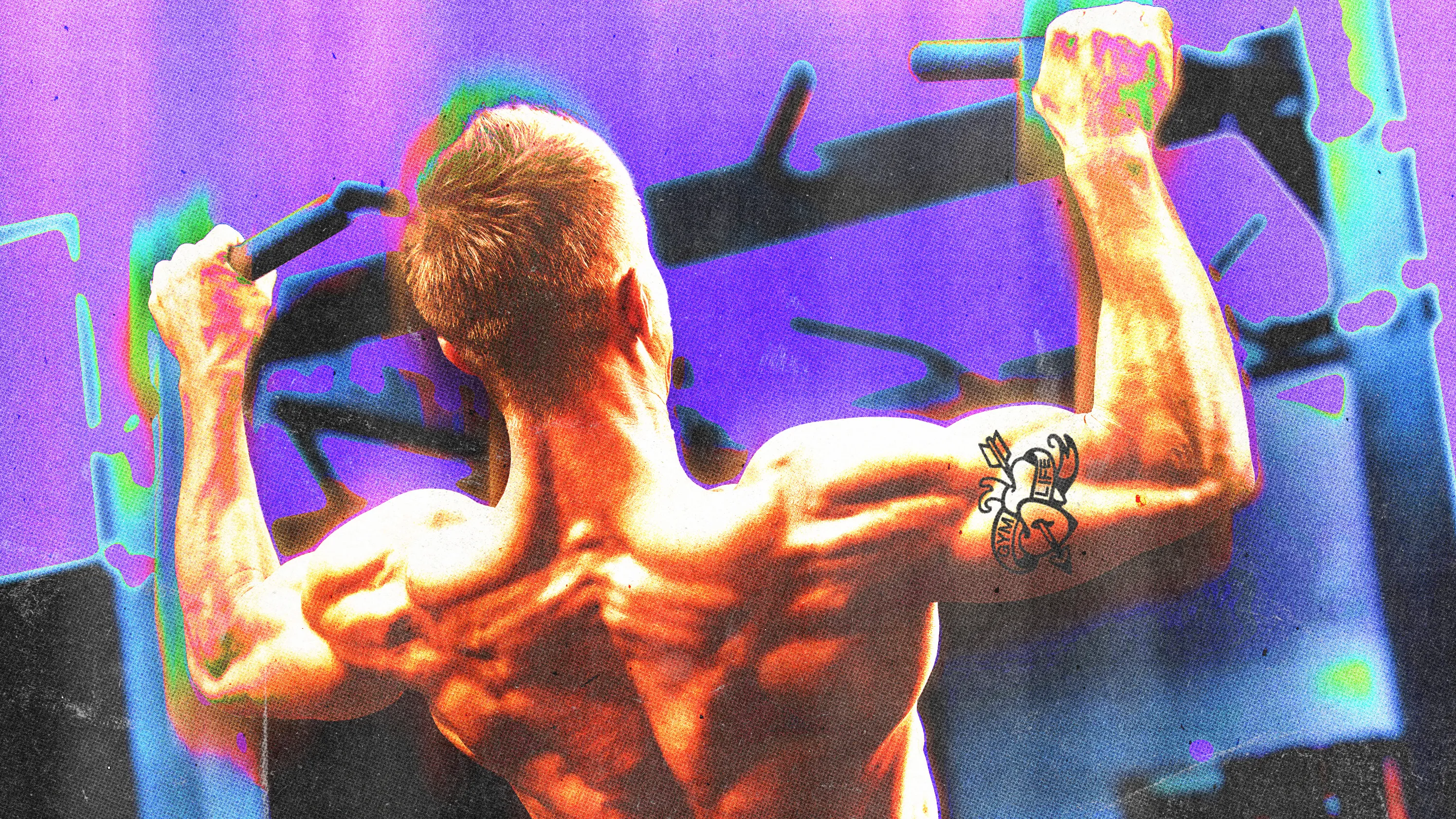By Tom Ward
Copyright gq

Beloved by gym bros and reality show contestants alike, upper body strength exercises have multiple benefits for gym performance and daily life. And contrary to popular belief, you don’t need to spend every day in the gym (or swap all your gym clothes for deep-V vests) to feel the benefits, either.
With just a few sessions a week, you can achieve a more rounded, stronger body that’s built to last. Here’s how, along with a list of expert-recommended exercises to ensure you never get bored.
What we mean by upper body exercises
For fitness purposes we can roughly divide the body into three sections: the lower body (legs), the core (abs), and upper body (everything from the chest up including arms, shoulders, and back—but not your head, you don’t need to exercise your head in the gym). Bench press, shoulder press, flys, shrugs, etc. all constitute upper body exercises.
“When we talk about upper body exercises, we’re commonly talking about exercises which impact the pectorals, deltoids, triceps, biceps, lats, and traps,” says Kosta Telegadas, head coach and founder of Telegadas Performance Training.
Telegadas is quick to point out that we often forget our forearms and rotator cuffs when training upper body. They are vital for grip strength and encouraging a full range of motion, respectively.
“These areas are sometimes overlooked as they aren’t massive ‘show muscles’, even though they play an important role in the function of other moves like the bench press, pull-ups, bent-over row, and overhead press.”
How they help in daily life
Working on your upper body has a plethora of practical applications.
“The invention of smartphones, and the prevalence of desk-bound work culture have contributed to a trend of poor posture, which often displays itself with a forward neck position, and generally slouched upper back and rounded shoulders,” says Wes Santos, coach and owner of Instate Fitness.
Turns out, Santos says, that working on your upper body can significantly help improve negative posture, with knock-on effects for your performance, longevity and even your mood.
“Weight training as a whole helps keep your bones and joints strong, which can protect you against injury and joint disease,” says Lee Brown, senior lecturer in Strength & Conditioning at the University of East London. “Upper body exercises have the specific benefits of improving mobility and range of motion applicable in everyday activity such as lifting, carrying shopping [bags] and more.”
How training upper body helps fitness
In addition to increasing mobility, working on specific upper body muscles will lead to an increase in muscle size and strength, especially in the chest, shoulders, and arms.
“This will affect the shape of the upper body by broadening the shoulders, increasing the width of the chest, and increasing the circumference of the arms,” Telegadas explains.
“As your upper body strength increases, you’ll also experience an increased ability to produce force, plus a confidence boost from the increase in feel-good hormones such as serotonin, dopamine, and endorphins,” he adds.
With resistance training in general proven to decrease your risk of all-cause mortality, upper body sessions are a no-brainer.
Some downsides to bear in mind
As any gym bro will tell you, upper body exercises aren’t a cure all. Lean on them too heavily and you’ll only cause yourself more woes.
“Gym goers can expect to see downsides if the exercises are not programmed or executed correctly,” says Telegadas. “For example, if you don’t do enough pulling movements relative to pushing movements, you could be in pain.”
Ever suffered from a bad back after banging out push-ups? This is why. As well as warming up properly, Telegadas recommends rotating your exercise plan every three to four weeks to not only avoid over-training, but to keep your muscles guessing, and adapting.
“A pull-to-push ratio of 2-3:1, with two to three pulling reps for every one pressing rep is ideal,” says Telegadas. “Don’t forget, if you’re only working out your upper body you’re leaving a lot of gains left on the table.”
Adding in lower body sessions in between your push-pull splits not only encourages a more rounded physique and level of ability, but also gives your poor chest, back, and arms time to recover.
The best upper body strength exercises to incorporate into your routine
Looking to boost your repertoire beyond the bench press? Here, Telegadas and Santos recommend their favorite upper body exercises with tips on getting them right.
Incorporate them into your routine as required, making sure to follow a balanced plan as described above.
Bench Press
“This is everyone’s favorite, so try to get it right,” says Santos, who stresses the importance of performing the movement with maximum control. “Focus on time under tension and earn the right to progress the weight,” he says. “As a general rule, ensure the bar touches your chest and you fully extend your arms to complete the repetition.”
Incline Bench Press
A variation on a classic, Telegadas advises the incline press as a great substitute for those struggling with the flat bench. “Common mistakes are the same as in the normal bench press,” he says. Make sure to go deep with each rep, take your time, and remember the incline press should land a little higher up the chest.
“This is a fantastic vertical push movement that will help develop shoulder and tricep strength while challenging your overhead and core strength and stability,” says Santos. Pick a medium to light weight, sit on the floor with your legs stretched in front of you, keep your chest tall and perform a traditional shoulder press while keeping in position.
Chin-Ups/Pull-Ups
Both bar exercises have enormous benefits for your core, back and shoulders. And both can be tough to get right. A band can help take your weight to start with. “Errors in the pull-up or chin-up include: not descending (elbows locked out), pulling with one side more than the other, and kicking (kipping) the knees so they can use some momentum to complete a rep,” says Telegadas. In other words: no CrossFit ‘pull-ups’ here, please.
Bent Over Barbell Row
“Rowing is fantastic for building the upper back,” says Telegadas. It also makes for a great super set with press-ups or bench press, helping balance out tight backs. “The main goal is to retract the shoulder tightly and pull the bottom of the plates/dumbbell to the hip. Common [mistakes] are descending too quickly, losing tension in the upper back, and not going through the full range of motion.”
Cable FacePulls
Another simple but effective move. Attach the rope accessory to the cable machine and position the cable at face height. Start with your arms extended in front of you parallel to the floor. “Brace your shoulder blades by imagining you are trying to hold a $10 bill between them,” advises Santos, “then pull the rope towards your face, flaring your elbows out as you do so.” Hold the weight for a moment, then slowly return the rope to the start position.
Cable Tricep Extensions
While you’re working with the cable machine, why not give your triceps some love? Instead of pulling the rope extension into your face, you’re going to push straight down, flaring your arms slightly at the bottom. Aim for lighter weight, higher reps here. “Common errors include not controlling the movement and not extending the elbows to feel a ‘squeezing’ of the muscle at the end range of motion,” says Telegadas.
Single arm concentration curls
“This is my favorite bicep exercise,” enthuses Santos. Sit on a bench and grab a light to medium weight. Keep your arm tight to the bench and raise the dumbbell staying in control of the dumbbell and squeezing the bicep until the dumbbell reaches the top of its range of motion. “The eccentric portion of this exercise is where the magic happens,” says Santos. “Slowly lower the dumbbell in a controlled manner until your arm returns to its fully position.
This story originally appeared in British GQ.



